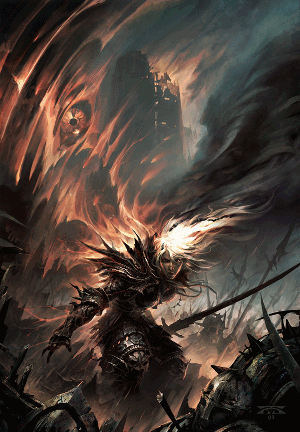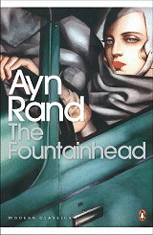I’m currently reading in parallel Memories of Ice, Goodkind’s Wizard’s First Rule, and A Game of Thrones because I’m curious about the real differences between them.
Erikson is the one who brings up more controversy between fans and haters, Goodkind is rooted in the genre, hugely popular and vastly hated by critics, Martin uses a more realistic setting and approach, is popular, and vastly loved by critics.
It’s a good mix of radically different writers.
One aspect I was considering and that sticks out the most is that in Erikson’s books there are NO slices of life. I can’t make a single example. This is maybe the main reason why the books aren’t able to “capture” the reader on a emotional level and why so many complain that the characterization is shallow.
I am often arguing that the problem of Erikson’s books is not that they are too long, but that they are short. There is no space for things to calm down and let the reader becoming familiar with what is going on. Characters are first and foremost plot points, then characters. I think that Erikson’s characterization is deep and interesting. Original and challenging. But sweeping changes happen so quickly and so deeply that the reader doesn’t have ways to “familiarize”.
What makes a book fun to read is the immersion, so the identification. The main reason why writers like Goodkind and Stephanie Mayer are popular is because those books rely heavily on a certain audience that is going to identify with the characters. In order to do so you need a lot of exposition about “slices of life”. Something like “life before the plot”. First you build the characters, introduce them to the reader, give them some normal life to which readers can connect (romance, school, for example). Then you trigger the plot that builds the tension. I used Goodkind and Mayer as an example, but even Tolkien worked like that. It starts with a birthday party. And Hobbits are a race shaped to welcome the reader through certain familiarities and quirks we all share. Shaped as “bridges” between the two worlds.
That’s exactly the opposite of Erikson. No matter what book you read, what you find from the first page to the last is plot. Plot, plot and plot. Every step is a pivotal turn and the setting is already so alien and relying on its own mythology that it’s nearly impossible for the normal reader to connect with it.
So this is the point. Characters suffer from lack of space. The prose and plotting is so dried to the essential that the story feels mechanical. It lacks naturalness. And this leads to all the critics about Erikson. That the first book is unreadable, that it’s filled with deus ex machina and that the characters are shallow.
From the first page to the last the characters are involved and react to plot points, similarly to what may happen in the Silmarillion. There is no space for the familiarization and for characters to become accessible on an emotional level. The setting is so disconnecting and different that it’s impossible to relate to it if not on a cognitive level that leaves out the emotional impact.
Example:
There’s one particular aspect that involved Felisin in the second book. I’ve read reviews saying that Felisin is a flat character that sees no evolution, when to me it’s one of the most fantastic and challenging journey. Problem is, most of these changes happen before the first page, and I’m not joking.
Felisin is Paran’s sister. She only appears in a handful of lines of dialogue between Paran and Tavore in the first book. 99% of the readers will start book 2 without remembering that part. The deep changes that Felisin lives are only perceivable if one has an idea of how Felisin was BEFORE but this is never shown explicitly in the book.
Felisin is supposed to start as Paran’s little sister. The naive, innocent character who spends all her time reading books, to whom Paran is protective (and then guilty for having left her). Opposed to her older sister, that is the antithesis. Cold, determined, assertive. During the second book Erikson cruelly tortures the typical “innocent character” in every way possible. And he shows how a life can shape a person. He shows how everything “beautiful” can become corrupt and mimic what it saw. How it can lose all that beauty, physical and emotional.
But all this is lost. Readers find Felisin as a disagreeable character, almost a villain. No change is perceived because the “first” Felisin is never shown, we just get the evil one. And this transition and its thematic effect is completely lost (along with the prologue, where Erikson narrates from the point of view of Felisin and only reveals last that she is chained. Who cares to see a chained character if no one remembered her?).
This is just an example but is the way I feel this series. I’m awed by how it’s challenging and how it never takes the easy, predictable path. But it also feels like it overdoes and overreach, so becoming a niche product that only works when you give it enough dedication. And most readers aren’t willingly to fill all the holes that Erikson left behind.
Hence the lack of vaster popularity.
Most writers know and use all their tricks to lure the reader and make them follow. Erikson uses none. Either you want to follow because you share a certain mindset, or he doesn’t care and leaves you there.



